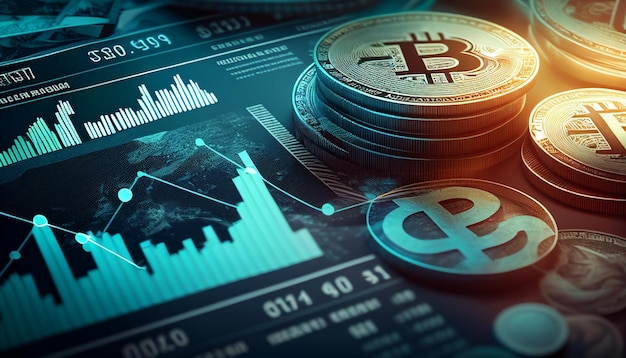The boundaries of human creativity are being pushed as AI technology advances, but can machines truly replicate the essence of creativity that defines our humanity? Let’s explore this intriguing question.
In recent years, artificial intelligence (AI) has made significant strides in various fields, from healthcare and finance to entertainment and art. AI-driven technologies have shown remarkable capabilities in tasks such as image recognition, natural language processing, and even composing music or generating art. But amidst these impressive feats, one question lingers: Can machines truly be creative? In this blog post, we’ll delve into the fascinating realm of AI-driven creativity, exploring its potential, limitations, and the implications for the future.
The Spectrum of Creativity
Creativity, often considered a quintessential human trait, is a multifaceted concept that encompasses the ability to generate novel and valuable ideas, expressions, or solutions. It involves a blend of imagination, intuition, and expertise. Traditionally, creativity was thought to be the exclusive domain of human beings, a product of our consciousness, emotions, and cultural experiences.
However, the advent of AI has blurred the lines between human and machine creativity. AI systems, particularly those powered by machine learning and deep learning algorithms, have demonstrated the capacity to mimic creative processes in various domains. Here, we’ll explore how AI has made inroads into creativity across different fields.
AI in Art and Music
One of the most visually captivating examples of AI-driven creativity is the generation of art and music. Deep learning algorithms can analyze vast datasets of artistic styles and compositions, learning to generate pieces that mimic the works of renowned artists or even creating entirely new and unique artistic expressions. For instance, AI-generated paintings have been exhibited in galleries, sparking debates about the definition of art and the role of the artist.
Similarly, AI has ventured into the realm of music composition. AI-powered algorithms can analyze vast music libraries to generate pieces in various styles, from classical symphonies to contemporary pop songs. Some AI-generated music has been so convincing that it has fooled human listeners into believing it was composed by a human.
These AI-generated creations raise intriguing questions about the nature of creativity. Can an algorithm truly understand and appreciate the emotional and cultural significance that often underpins artistic works? Does the absence of human experience and intention diminish the value of AI-generated art and music? While AI can produce visually and audibly pleasing creations, it lacks the deeper understanding and emotional connection that often define human creativity.
AI in Literature and Writing
AI has also made significant strides in the world of literature and writing. Natural language processing models, like GPT-3, have demonstrated the ability to generate coherent and contextually relevant text, whether it’s writing articles, poems, or even entire books. These models can mimic the writing style of various authors and generate content that is indistinguishable from human-written text.
This capability has led to the emergence of AI-powered content generation tools that can assist writers and marketers in creating high-quality content more efficiently. While AI can generate text that is grammatically correct and contextually relevant, it still lacks the depth of human creativity and the ability to infuse written work with personal experiences and emotions.
The Role of AI in Innovation
Beyond art, music, and writing, AI has a significant role to play in innovation across industries. AI-powered algorithms can analyze vast datasets, identify patterns, and generate insights that can lead to groundbreaking discoveries in fields like healthcare, finance, and scientific research. These capabilities are invaluable for accelerating progress and solving complex problems.
However, the question of whether AI can be considered creative in these contexts remains subjective. While AI can uncover novel solutions and provide valuable recommendations, it lacks the intrinsic motivation, passion, and emotional connection that often drive human creativity and innovation. AI is a tool that can enhance and augment human creativity, but it is not a substitute for the human touch.
The Ethical Considerations
As AI continues to advance, ethical considerations surrounding AI-driven creativity become increasingly important. Issues related to copyright, ownership, and authenticity arise when AI generates creative works. Who owns the rights to AI-generated art, music, or literature? How can we ensure that AI-generated content is not used to deceive or manipulate audiences?
Additionally, there are concerns about the potential loss of jobs in creative industries. If AI can produce art, music, and writing that is indistinguishable from human creations, what does this mean for artists, musicians, and writers who rely on their work for a livelihood?
Conclusion
In the realm of creativity, AI has undoubtedly made remarkable progress, pushing the boundaries of what machines can achieve. AI-driven technologies have demonstrated the ability to generate art, music, and writing that is visually and audibly pleasing, often rivaling human creations in quality. However, the essence of human creativity, rooted in emotions, experiences, and cultural context, remains elusive for AI.
As we navigate the evolving landscape of AI-driven creativity, it’s essential to recognize that machines can be powerful tools for enhancing human creativity and innovation. AI can assist artists, writers, and innovators in their creative endeavors, but it cannot replace the intrinsic human qualities that make creativity a unique and cherished aspect of our humanity.
In the end, the question of whether machines can be truly creative may remain open-ended. Perhaps the true potential of AI-driven creativity lies not in replicating human creativity but in complementing it, pushing the boundaries of what we can achieve together, humans and machines in collaboration.
As we continue to explore the frontiers of AI and creativity, we must tread carefully, addressing ethical concerns and ensuring that the essence of human creativity remains at the heart of our artistic and innovative endeavors.




